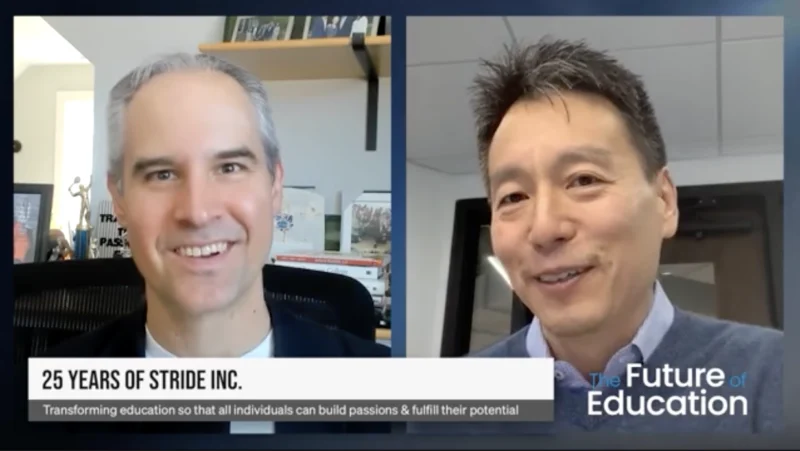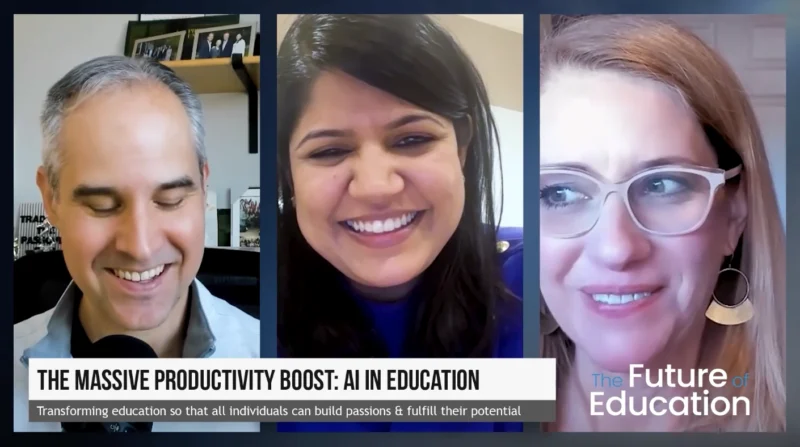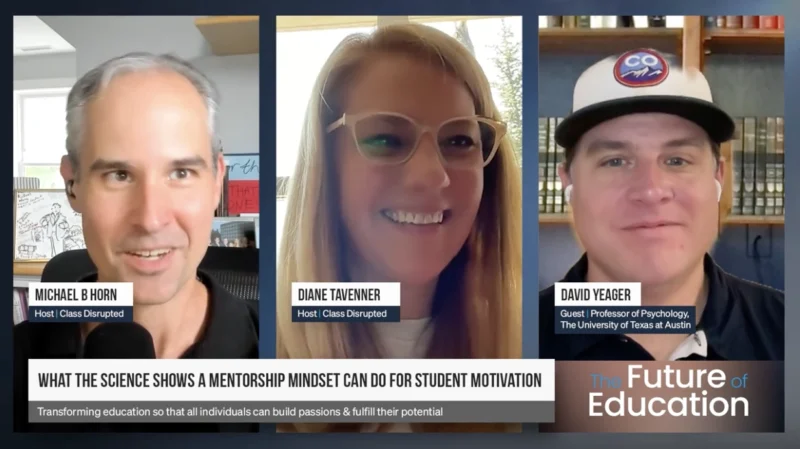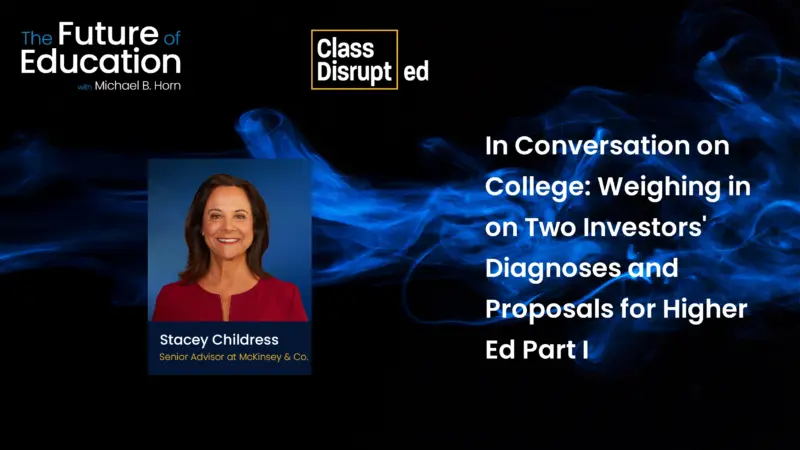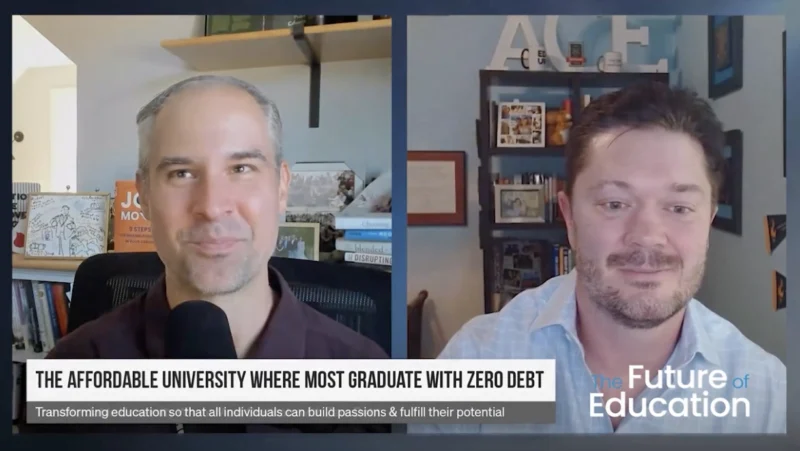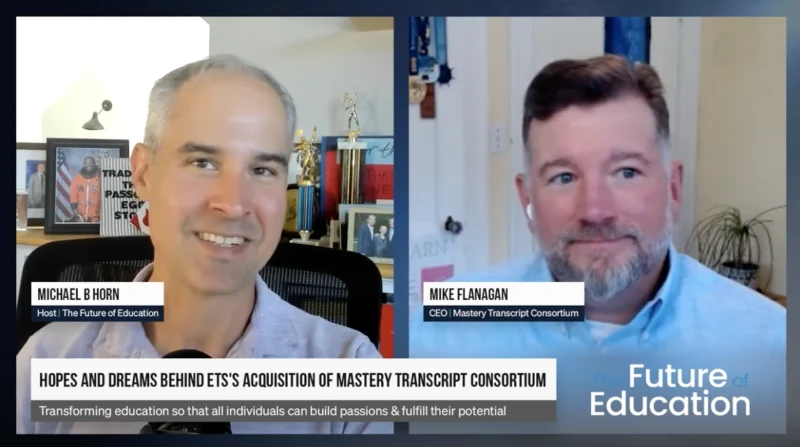The Future of Education
As virtual learning matures and school choice accelerates across the U.S.,the 25th anniversary of Stride Inc. offers a moment to reflect on how far the digital learning ecosystem has come and where it’s headed.. Once known as K12 Inc., the company helped pioneer online education at scale. But in a landscape shaped by evolving…
Latest
Education & EdTech
Educational Choice Isn’t Enough—Implementation Will Make or Break It
The U.S. education landscape is undergoing a seismic shift as more states adopt education savings accounts (ESAs), signaling a broader push toward personalized, parent-directed learning and broader educational choice. With over a dozen states now offering universal ESA programs, debates around school choice have reached a new level of urgency. Throughout 2024, enthusiasm for…
Education & EdTech
Florida’s Education Evolution: From School Choice to Education Choice
In Florida, education is undergoing a radical shift—not just in who can choose schools, but in how education itself is being delivered. With over 500,000 students now receiving state scholarships and more than 80,000 families engaging in a la carte learning through education savings accounts (ESAs), the Sunshine State is no longer just a…
Class Disrupted
Generative AI tools Is Taking On the Tedious Tasks—Freeing Teachers to Inspire, Mentor, and Elevate Student Thinking
Artificial intelligence is changing the rules of engagement in education. As generative AI tools like ChatGPT become increasingly integrated into academic environments, they’re reshaping what productivity, personalization, and pedagogy look like. According to McKinsey’s research, teachers typically spend 20 to 40 percent of their time on tasks that could be automated with today’s technology,…
Class Disrupted
AI in the Classroom: Why AI-Powered Personalized Learning Might Not Deliver on its Promise
AI is everywhere—and it’s evolving rapidly. From predictive algorithms to large language models like ChatGPT, artificial intelligence is reshaping how we work, communicate, and learn. As schools explore AI in the classroom, educators and researchers are asking: Does AI really understand us? Or are we projecting human-like thinking onto systems that are fundamentally different? The…
Education & EdTech
A Skills-First Model Without Student Debt: How MedCerts Is Tackling the Healthcare Staffing Crisis With Tech-Driven Training
A growing healthcare staffing crisis is forcing institutions to rethink how the next generation of clinical talent is trained. A study by Mercer and Lightcast, cited by the American Hospital Association, projects that the U.S. could be short of as many as 100,000 critical healthcare workers by 2028. This urgent gap is pushing innovators to…
Class Disrupted
AI in Education Can Democratize Expertise—But Only If Systems Evolve
As artificial intelligence becomes increasingly embedded in our everyday lives, AI and education are becoming more tightly intertwined. Many teachers and students are experimenting with AI in education, from personalized tutoring tools to automated lesson planning. While traditional edtech tools struggled to deliver on the promise of personalized learning, today’s generative AI appears poised to…
Latest
Latest Class Disrupted
AI in the Classroom: Why AI-Powered Personalized Learning Might Not Deliver on its Promise
AI is everywhere—and it’s evolving rapidly. From predictive algorithms to large language models like ChatGPT, artificial intelligence is reshaping how we work, communicate, and learn. As schools explore AI in the classroom, educators and researchers are asking: Does AI really understand us? Or are we projecting human-like thinking onto systems that are fundamentally different? The…
AI in Education Can Democratize Expertise—But Only If Systems Evolve
As artificial intelligence becomes increasingly embedded in our everyday lives, AI and education are becoming more tightly intertwined. Many teachers and students are experimenting with AI in education, from personalized tutoring tools to automated lesson planning. While traditional edtech tools struggled to deliver on the promise of personalized learning, today’s generative AI appears poised to…
Classroom AI: Who Should It Serve First—Teachers or Students?
Artificial intelligence is rapidly transforming nearly every sector, and education is no exception. As AI capabilities evolve, tech giants like OpenAI, Google, and Meta have increasingly showcased education as a core use case in product rollouts. But the tools being created often split along a critical divide: are they meant for teachers, or for…
Tackling All That K-12 Schools Try to Do: The Solutions
As public confidence in major institutions continues to erode, the American K–12 education system finds itself straining under the weight of legacy expectations and modern demands. From grading and college recommendations to extracurriculars and character development, K-12 schools are tasked with a near-impossible mission: to do it all, for everyone. At the same time,…
What K-12 Education System Tries to Do And Where It Misses
As America reevaluates what its public schools are truly for, new questions emerge about the purpose, performance, and priorities of K-12 education system. A system once centered around teaching the “three Rs” now juggles responsibilities as diverse as social services, values instruction, and community governance. Yet, despite these ambitions, a growing chorus of education…
Cut Costs, Not Corners for the Future of Higher Education: Redirect Focus to Student Achievement
The landscape of higher education has been the subject of intense scrutiny and debate in recent years. The rising costs of tuition, the ballooning of administrative overhead, and questions about the real value of a college degree have sparked a vital conversation about the future of higher education. This has sparked discussions among educators,…
Human First: Redefining Intelligence and Self-Actualization in Education
How can education evolve to prioritize human potential and self-actualization over standardized results? In the latest episode of “The Future of Education: Class Disrupted,” hosts Michael B. Horn and Diane Tavenner, along with their esteemed guest Dr. Scott Barry Kaufman, a Cognitive Scientist, Podcaster, Author, and Coach, explore the transformative power of viewing education…
Beyond the Acronym: Exploring the Depth of DEI
The world is increasingly driven by the quest for equality and understanding, and the realms of diversity, equity, and inclusion (DEI) have become more than just buzzwords; they have emerged as pivotal elements in shaping the future of education. Yet, as these concepts gain prominence, they also encounter resistance and misinterpretation, leading to polarized…
Is Apprenticeship the Key to Bridging the Experience Gap in Education?
Apprenticeship could be the perfect solution to moving the needle and bridging the experience gap in education. As education stands at a crossroads between educational reform and workforce development, how can apprenticeship programs revolutionize the approach to equipping the next generation for the evolving job market? In an insightful episode of The Future of…
Latest FAQs
Reinventing Education to Help with Student Behavioral Issues
A recent School Pulse Panel study revealed a concerning trend in U.S. education today, student behavior. The data within the study suggests schools are facing substantial behavioral challenges post-pandemic, and they feel they need more strategies to address them. Educator, Author, and Host of The Future of Education, Michael B Horn, said that when he…
Latest Podcast Epis.
Educational Choice Isn’t Enough—Implementation Will Make or Break It
The U.S. education landscape is undergoing a seismic shift as more states adopt education savings accounts (ESAs), signaling a broader push toward personalized, parent-directed learning and broader educational choice. With over a dozen states now offering universal ESA programs, debates around school choice have reached a new level of urgency. Throughout 2024, enthusiasm for…
Florida’s Education Evolution: From School Choice to Education Choice
In Florida, education is undergoing a radical shift—not just in who can choose schools, but in how education itself is being delivered. With over 500,000 students now receiving state scholarships and more than 80,000 families engaging in a la carte learning through education savings accounts (ESAs), the Sunshine State is no longer just a…
A Skills-First Model Without Student Debt: How MedCerts Is Tackling the Healthcare Staffing Crisis With Tech-Driven Training
A growing healthcare staffing crisis is forcing institutions to rethink how the next generation of clinical talent is trained. A study by Mercer and Lightcast, cited by the American Hospital Association, projects that the U.S. could be short of as many as 100,000 critical healthcare workers by 2028. This urgent gap is pushing innovators to…
Nontraditional Education Is Outpacing the System With Real-World Skills, Student-Led Ventures, and Community-Driven Networks
Across the country, a growing number of students and educators are taking education into their own hands—literally. As frustration with traditional education mounts, a new wave of entrepreneurial energy is leading to radically reimagined learning spaces. From food forests to fashion start-ups, the classroom looks more like a collaborative studio than a lecture hall….
Reboot Business Education: Make Lifelong Learning the Default
As artificial intelligence reshapes industries and digital skills rapidly evolve, business schools find themselves at a crossroads. Traditional MBA programs and executive education are no longer endpoints but touchstones in a lifelong learning journey. As digital tools and technologies advance rapidly, educational models must keep pace to remain relevant in a changing workforce. Business schools…
Career Planning Beyond the College Track: How Work-Based Learning Expands Career Options for Students
As debates around the value of college heat up and the demand for skilled workers rises, a growing number of educators and policymakers are rethinking the “college for all” mindset. A 2024 report from Georgetown’s CEW found that many middle-skill jobs—requiring only a certificate or associate’s degree—pay over $53,000 annually early on in a…
Can a Docuseries Change the Way Communities Think About School Infrastructure Reform?
School infrastructure in the United States is in a critical condition. According to the U.S. Government Accountability Office (GAO), an estimated 54% of public school districts report needing upgrades or replacements for multiple building systems, such as HVAC, roofing, and structural elements. In a few states (like Idaho), the situation is compounded by laws…
Will the New Education R&D Bill Spark the Innovation Schools Desperately Need?
In a rare show of bipartisan cooperation, Senators Michael Bennet (D-CO) and John Cornyn (R-TX) have introduced the New Essential Education Discoveries (NEED) Act, aimed at revolutionizing how the U.S. invests in education innovation. The bill proposes a new National Center for Advanced Development in Education—akin to DARPA but for schools—within the Institute for…
Educators Must Combine 1:1 Tutoring with the Science of Reading to Close the Reading Gap
Coming out of the COVID-19 pandemic, the education system faced a seismic shift. Learning loss, especially in foundational literacy, was a national crisis. In 2024, only 31% of fourth graders in the U.S. were reading proficiently, according to the National Assessment of Educational Progress (NAEP). Meanwhile, tutoring exploded as a top strategy to recover…

